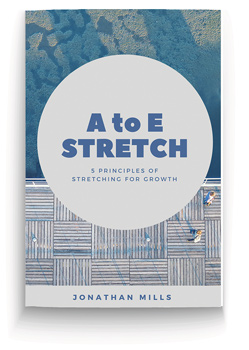“We tend to think that what matters is having outstanding leadership at the senior level. Great leadership at the top doesn’t amount to much if you don’t have exceptional leadership at the unit level. That’s where great things get done” (The re-education of Jim Collins, Inc)
There are always positives and negatives to everything. Sometimes the positives outweigh the negatives, producing feelings of comfort and satisfaction; at other times, the negatives outweigh the positives, producing feelings of frustration, anxiety and even fear. The COVID 19 corona virus pandemic has certainly played its part in producing a mixture of feelings – for some, it has been a devastating experience with loss on all fronts; for others, it has produced great moments of opportunity, change and a new lease of life, invoking feelings of contribution, innovation, and beneficial change. People who were perhaps just surviving in previous careers have now had to reinvent themselves, finding unexpected opportunities and new chances to contribute. Others haven’t changed and are now either languishing in self-pity or, at best, finding it difficult to cope.
The world has largely moved to a hybrid work environment, where people may work from home on certain days, but are expected to come into the office for specific meetings, team togetherness and a focus on maintaining productivity and achieving set goals. This situation places extreme pressure on leadership, resulting in some confusion and feelings of being thrown in the deep end with respect to leadership methodology.
Alinda Nortje, founder and chairperson of Free To Grow, notes: “Leading in a world with continuously mounting pressure to achieve results while creating a positive employee experience and building a culture of engagement, inclusion and collaboration is not easy. The pandemic has added even more complexity to the leadership role. Leaders are expected to handle all the typical management tasks – supervising teams, making decisions, and managing operations, for example – AND to do so within an environment that has been rapidly evolving due to the fast pace of digital transformation. The fundamental leadership principles for this new working environment have not changed. It’s about building relationships, holding people accountable, and creating a culture where all employees feel like they can thrive, while being inspired to put in discretionary effort. However, the methods and tools managers used to create this thriving environment are now different in a hybrid situation. This transition is not an easy one for many leaders.”
Some of the challenges in a hybrid work environment include the following:
- High levels of stress and feelings of being overwhelmed due to the speed of change and prolonged uncertainty
- The challenges of communication in the virtual and hybrid working environments
- Lack of skills to build and maintain relationships and a sense of connection with remote teams
- Different approaches to trust, accountability, and transparency
- The risk of overworking and loss of work-life balance
Some recent surveys indicate the following trends:
- Of employees surveyed, 75% reported that their immediate superior is the most stressful part of their day (McKinsey & Co, 2020)
- 71% of companies feel their leaders are unable to lead their organisations into the future (BrandonHall)
- 66% of leaders reported feeling ‘used up’ by the end of the day (DDI Global Leadership Forecast, 2021)
- 35% of employees rated their virtual leader as effective (CultureWizard, 2020)
- 20% of leaders surveyed believed that they were effective leading virtually (DDI Global Leadership Forecast, 2021)
Leaders thus need to learn new skills to be effective in the hybrid work environment. Engaging employees meaningfully has never been more important. Peter Drucker notes: “The only skill that will be important in the 21st Century is the skill of learning new skills. Everything else will become obsolete over time”.
Free To Grow, (28 years old, having worked in 35 countries for over 1375 companies, training over 106 000 leaders and employees), has developed a relevant and meaningful learning programme, LEADConnect, to deal with the necessary skills needed by leaders in the new hybrid work environment. It provides leaders with a learning journey, addressing the 5 C’s that are critical for effectiveness and confidence with respect to engaging employees – Clarity, Care, Connection, Communication and Competence (digital) (www.freetogrow.com) For more information, please contact me on jonathan@ftgsa.co.za










